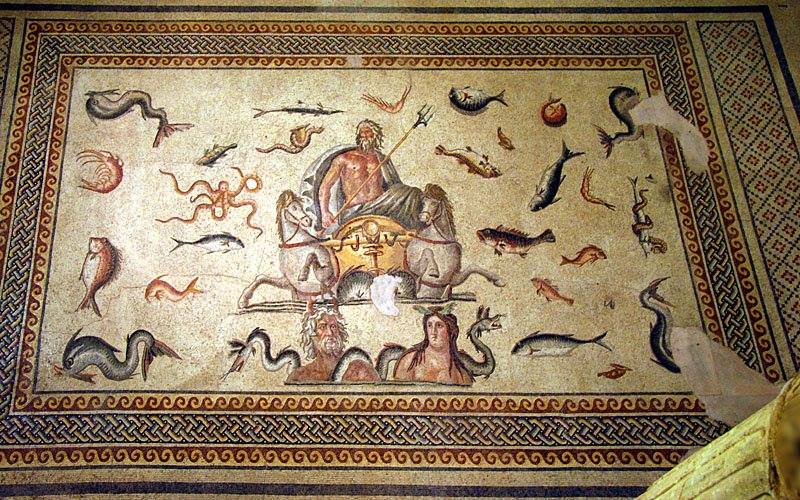Ovid's account of the battle of Lapiths and Centaurs in Metamorphoses 12 is engaged in exploring what it means to be human. Theseus and his Lapith friends are not expecting the chaos that explodes at the wedding of Pirithous and Hippodamia.
In looking at the centaurs through the eyes of the Greek heroes, we're seeing creatures that are biform, clearly not like us, yet just as clearly containing, somehow, fully the upper half of an entity that's uncannily, undeniably, us. They provoke urgent anthropological inquiry.
"Pindar recounts how the Centaurs from their very origins were associated with the negation of marriage," says Page duBois in Centaurs and Amazons.
Pindar, Pythian 2:
duBois:
We might do well to remember that the Parthenon's metopes depicted four battles: the battle of the giants against the Olympians; the battle of the Amazons and Athenians; the battle of Lapiths (with Theseus) vs. Centaurs, and the war of Troy. The war rages around borderlines between what the Greeks understood to be their own kind, and the other, in various guises.
More from the duBois book:
In looking at the centaurs through the eyes of the Greek heroes, we're seeing creatures that are biform, clearly not like us, yet just as clearly containing, somehow, fully the upper half of an entity that's uncannily, undeniably, us. They provoke urgent anthropological inquiry.
"Pindar recounts how the Centaurs from their very origins were associated with the negation of marriage," says Page duBois in Centaurs and Amazons.
Pindar, Pythian 2:
Unnatural lust throws men into dense trouble; it befell even him [Ixion], since the man in his ignorance chased a sweet fake and lay with a cloud, for its form was like the supreme celestial goddess, the daughter of Cronus. The hands of Zeus set it as a trap for him, a beautiful misery. Ixion brought upon himself the four-spoked fetter, his own ruin. He fell into inescapable bonds, and received the message that warns the whole world. She bore to him, without the blessing of the Graces, a monstrous offspring—there was never a mother or a son like this—honored neither by men nor by the laws of the gods. She raised him and named him Centaurus, [45] and he mated with the Magnesian mares in the foothills of Pelion, and from them was born a marvelous horde, which resembled both its parents: like the mother below, the father above.
duBois:
"As liminal creatures, the Centaurs may be understood most fully if their sexual nature is taken into account. They are not simply nature spirits, or river creatures, but also hybrid monsters whose existence in myth permitted speculation about boundaries and kinds."
"As liminal beings . . . they tested the the boundaries between man and beast, between nature and culture." Centaurs and Amazons.
We might do well to remember that the Parthenon's metopes depicted four battles: the battle of the giants against the Olympians; the battle of the Amazons and Athenians; the battle of Lapiths (with Theseus) vs. Centaurs, and the war of Troy. The war rages around borderlines between what the Greeks understood to be their own kind, and the other, in various guises.
More from the duBois book:



No comments:
Post a Comment